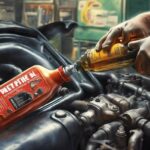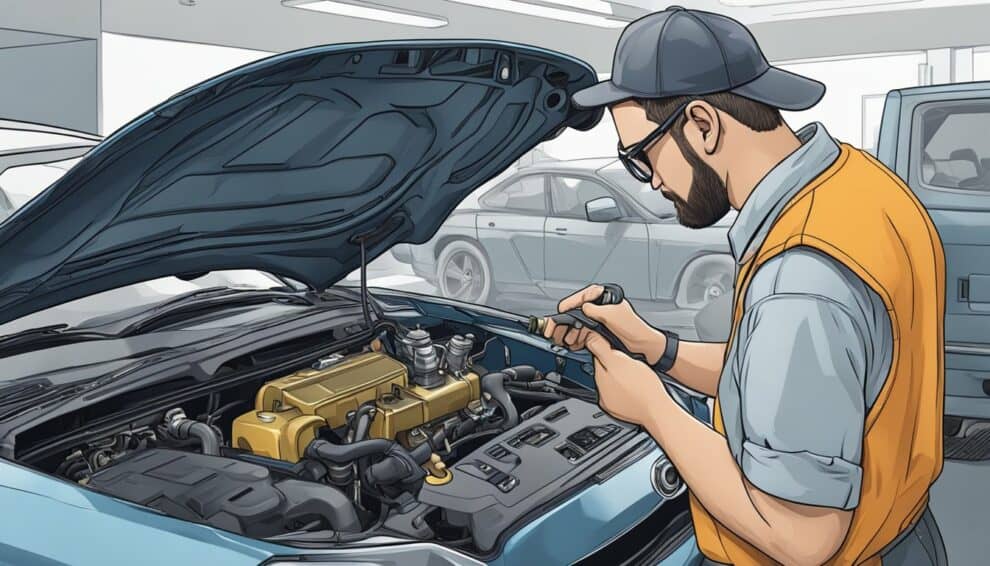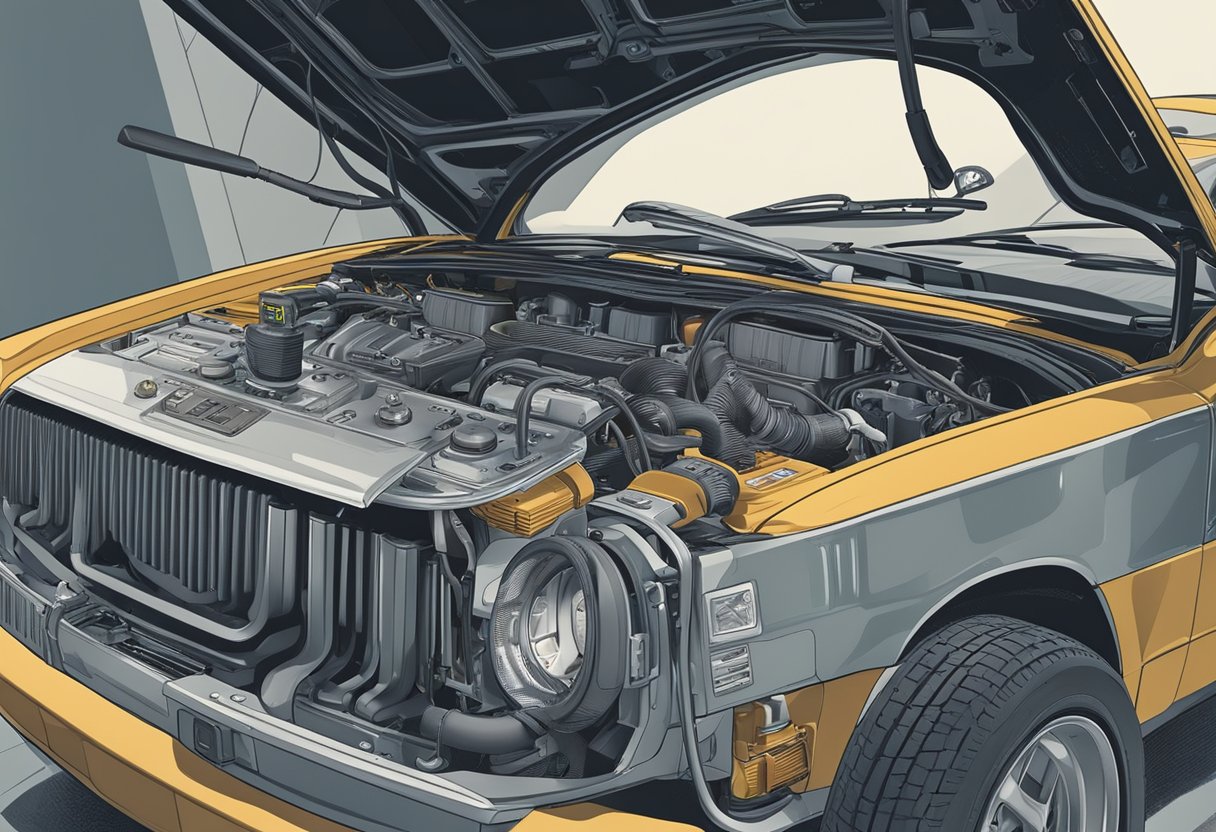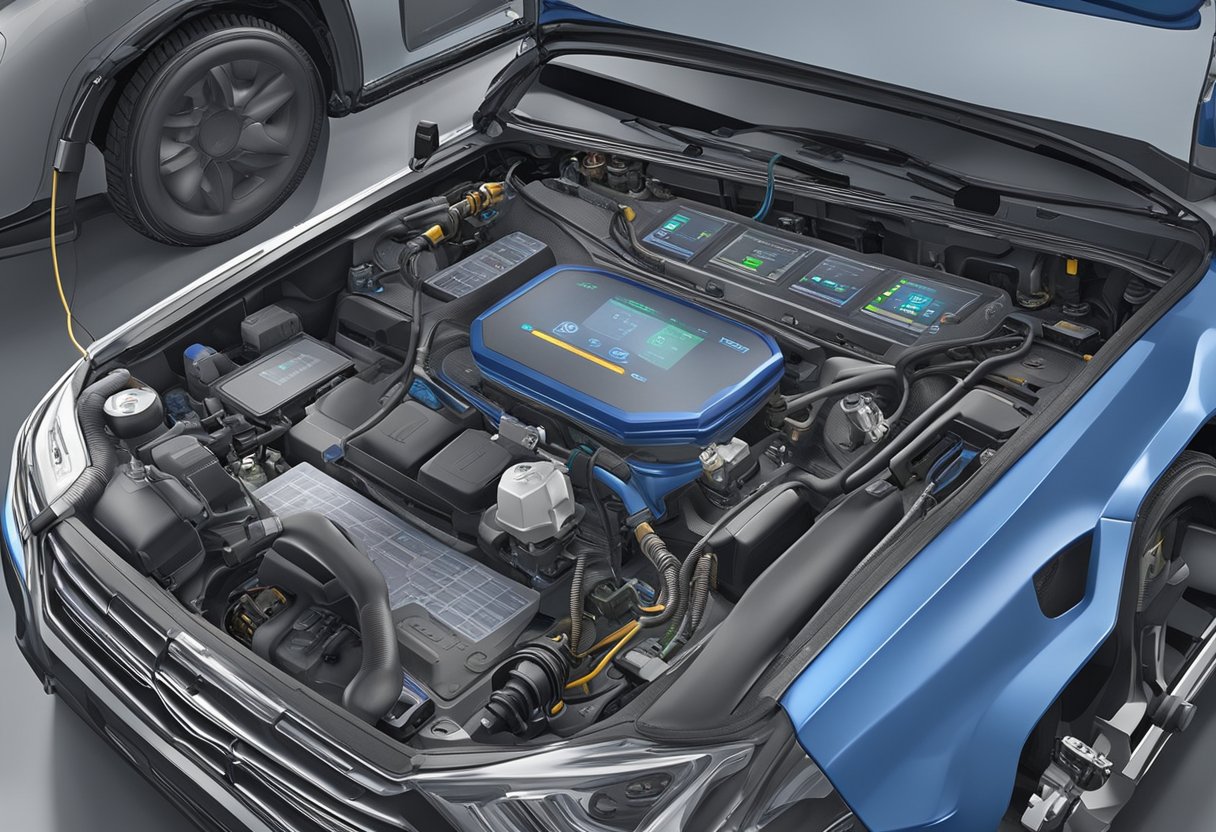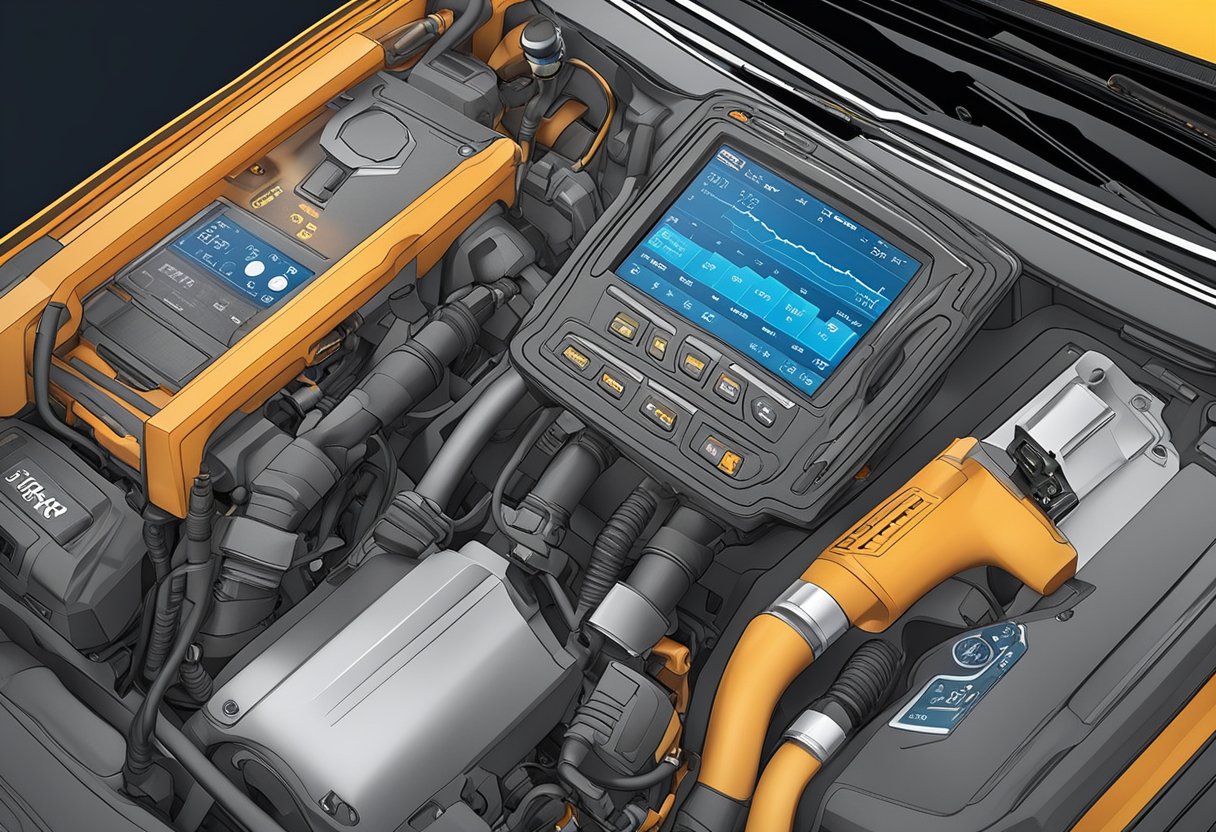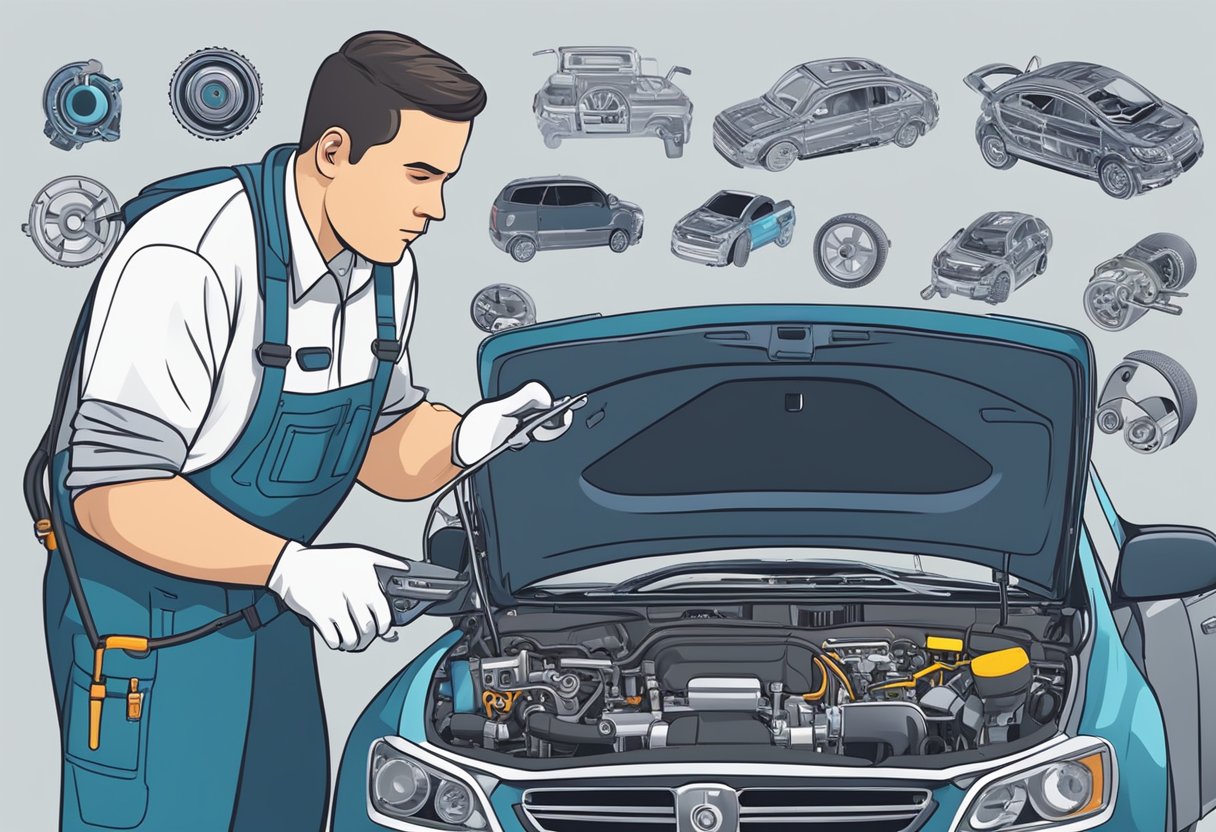Fuel trim mysteries can be a frustrating experience for car owners. The P0170 code is a common issue that many drivers face. It indicates that the fuel mixture in the engine is too lean and can cause problems with the performance of your vehicle. In this article, we will explore the causes of the P0170 code and how to fix it.
When your car’s engine is running, the fuel trim system monitors the air/fuel mixture to ensure that it is at the optimal level. If the system detects that the mixture is too lean, it will trigger the P0170 code. This can be caused by a variety of factors, including a faulty oxygen sensor, vacuum leak, or clogged fuel injectors. It is important to diagnose and fix the issue promptly to avoid further damage to your vehicle.
Understanding Fuel Trim
Basics of Fuel Trim
Fuel trim is a term used to describe the adjustment of fuel delivery by the engine control module (ECM) to maintain the correct air-fuel ratio. The ECM uses various sensors, such as the oxygen sensor, to monitor the air-fuel ratio and adjust the fuel delivery accordingly. The fuel trim values are expressed as a percentage and can be positive or negative.
Positive fuel trim values indicate that the ECM is adding fuel to the mixture, while negative fuel trim values indicate that the ECM is reducing fuel delivery. The fuel trim values are constantly changing based on the engine load, temperature, altitude, and other factors.
Significance of the P0170 Code
The P0170 code is a diagnostic trouble code (DTC) that indicates a malfunction in the fuel trim system. Specifically, it indicates that the ECM has detected a fuel trim malfunction in Bank 1, which is typically the side of the engine where cylinder 1 is located.
The most common cause of a P0170 code is a vacuum leak in the intake system. Other possible causes include a faulty oxygen sensor, a malfunctioning fuel injector, or a clogged fuel filter.
It is important to address a P0170 code promptly, as it can lead to poor fuel economy, reduced engine performance, and increased emissions. A qualified mechanic can use a diagnostic scanner to read the code and determine the root cause of the problem.
Diagnostic Approaches
Initial Diagnostic Steps
When you encounter a P0170 code, the first step is to perform a visual inspection of the engine components and vacuum lines. Check for any signs of damage, wear, or leaks. Pay close attention to the air intake system, mass airflow sensor, oxygen sensors, and fuel injectors. A faulty component in any of these systems can cause the code to appear.
Next, check the fuel pressure and volume using a fuel pressure gauge. Low fuel pressure or volume can cause a lean condition and trigger the P0170 code. If the fuel pressure is within specifications, move on to checking the oxygen sensors.
Check the oxygen sensors using a scan tool that can read live data. Look for any fluctuations in the oxygen sensor readings that may indicate a problem with the sensor or the fuel system. If the oxygen sensors are functioning properly, move on to checking the fuel trim values.
Tools and Equipment Needed
To diagnose a P0170 code, you will need the following tools and equipment:
- Scan tool that can read live data
- Fuel pressure gauge
- Multimeter
- Vacuum gauge
- Smoke machine (optional)
Using a scan tool that can read live data is essential in diagnosing the P0170 code. It allows you to monitor the oxygen sensor readings, fuel trim values, and other engine parameters in real-time. A fuel pressure gauge is also necessary to check the fuel pressure and volume.
A multimeter is useful for checking the electrical signals from the oxygen sensors and other engine sensors. A vacuum gauge can help you diagnose vacuum leaks that may be causing the code to appear. Finally, a smoke machine can be used to locate hard-to-find vacuum leaks.
By following these initial diagnostic steps and using the necessary tools and equipment, you can effectively diagnose and repair the P0170 code.
What Could Cause the P0170 Code and How Does It Relate to Cooling System Performance?
The P0170 code can be caused by a faulty oxygen sensor or a vacuum leak, leading to a rich fuel mixture. This can impact the cooling system performance demystified, as an improper fuel mixture can cause the engine to run hotter than usual, putting strain on the cooling system. Regular maintenance can prevent these issues.
Common Causes of P0170
If you are experiencing a P0170 code, there are a few common culprits that could be causing the issue. Here are some of the most likely causes:
Oxygen Sensor Malfunctions
One of the most common causes of a P0170 code is a malfunctioning oxygen sensor. The oxygen sensor is responsible for monitoring the amount of oxygen in the exhaust and sending that information to the engine control module. If the sensor is not working properly, it can cause the engine to run rich or lean, which can trigger a P0170 code.
Vacuum Leaks
Vacuum leaks can also cause a P0170 code. When there is a leak in the vacuum system, the engine may be getting too much air, which can cause it to run lean. This can trigger the P0170 code. Common areas to check for vacuum leaks include the intake manifold gasket, throttle body gasket, and vacuum hoses.
Fuel Delivery Issues
Finally, fuel delivery issues can also cause a P0170 code. If the fuel pressure is too low or the fuel injectors are clogged, the engine may not be getting enough fuel, which can cause it to run lean. This can trigger the P0170 code. It is important to check the fuel pressure and inspect the fuel injectors if you suspect a fuel delivery issue.
By addressing these common causes of a P0170 code, you can help ensure that your vehicle is running smoothly and efficiently. If you are unsure about how to diagnose or fix the issue, it is always best to consult with a qualified mechanic.
Troubleshooting Strategies
When diagnosing a P0170 code, there are a few troubleshooting strategies that can help you pinpoint the root cause of the problem. In this section, we’ll discuss two important concepts to keep in mind when interpreting fuel trim data: short-term and long-term fuel trim.
Short-Term vs. Long-Term Fuel Trim
Short-term fuel trim (STFT) refers to the adjustments made by the engine control module (ECM) in response to immediate changes in the air/fuel mixture. These adjustments are made in real-time and are designed to keep the air/fuel ratio as close to the optimal level as possible. A positive STFT value indicates that the engine is running rich, while a negative value indicates that it is running lean.
Long-term fuel trim (LTFT), on the other hand, refers to the adjustments made by the ECM over a longer period of time. LTFT values are used to compensate for any persistent imbalances in the air/fuel mixture, such as a clogged fuel injector or a vacuum leak. A positive LTFT value indicates that the engine is running consistently rich, while a negative value indicates that it is running consistently lean.
Interpreting Fuel Trim Data
When diagnosing a P0170 code, it’s important to pay close attention to both STFT and LTFT values. If the STFT is consistently positive, but the LTFT is negative, this may indicate a vacuum leak or a clogged fuel injector. Conversely, if the STFT is consistently negative, but the LTFT is positive, this may indicate a faulty oxygen sensor or a dirty mass airflow sensor.
Another important factor to consider when interpreting fuel trim data is the load and RPM of the engine. Different engine loads and RPMs will require different air/fuel ratios, and the ECM will adjust the fuel trim values accordingly. It’s important to take these factors into account when diagnosing a P0170 code.
By understanding the differences between short-term and long-term fuel trim, and by carefully interpreting fuel trim data, you can quickly and accurately diagnose the root cause of a P0170 code.
Preventive Measures and Maintenance Tips
To avoid the P0170 code, there are some preventive measures and maintenance tips you can follow. Here are a few:
Use High-Quality Fuel
Using high-quality fuel is one of the best ways to prevent the P0170 code. Poor quality fuel can cause a variety of problems, including clogged fuel injectors and dirty fuel filters. Using a high-quality fuel can help prevent these issues and keep your engine running smoothly.
Replace Your Air Filter
A dirty air filter can cause a variety of problems, including the P0170 code. If your air filter is dirty, it can cause your engine to run rich, which can trigger the code. To prevent this, make sure to replace your air filter regularly.
Check Your Oxygen Sensor
Your oxygen sensor plays a crucial role in your engine’s performance. If it’s not working correctly, it can cause the P0170 code to appear. To avoid this, make sure to check your oxygen sensor regularly and replace it if necessary.
Regular Maintenance
Regular maintenance is essential for preventing the P0170 code. Make sure to follow your vehicle’s recommended maintenance schedule, including oil changes, filter replacements, and other routine maintenance tasks.
By following these preventive measures and maintenance tips, you can help prevent the P0170 code from appearing and keep your engine running smoothly.
As an Amazon Associate we earn from qualifying purchases.


